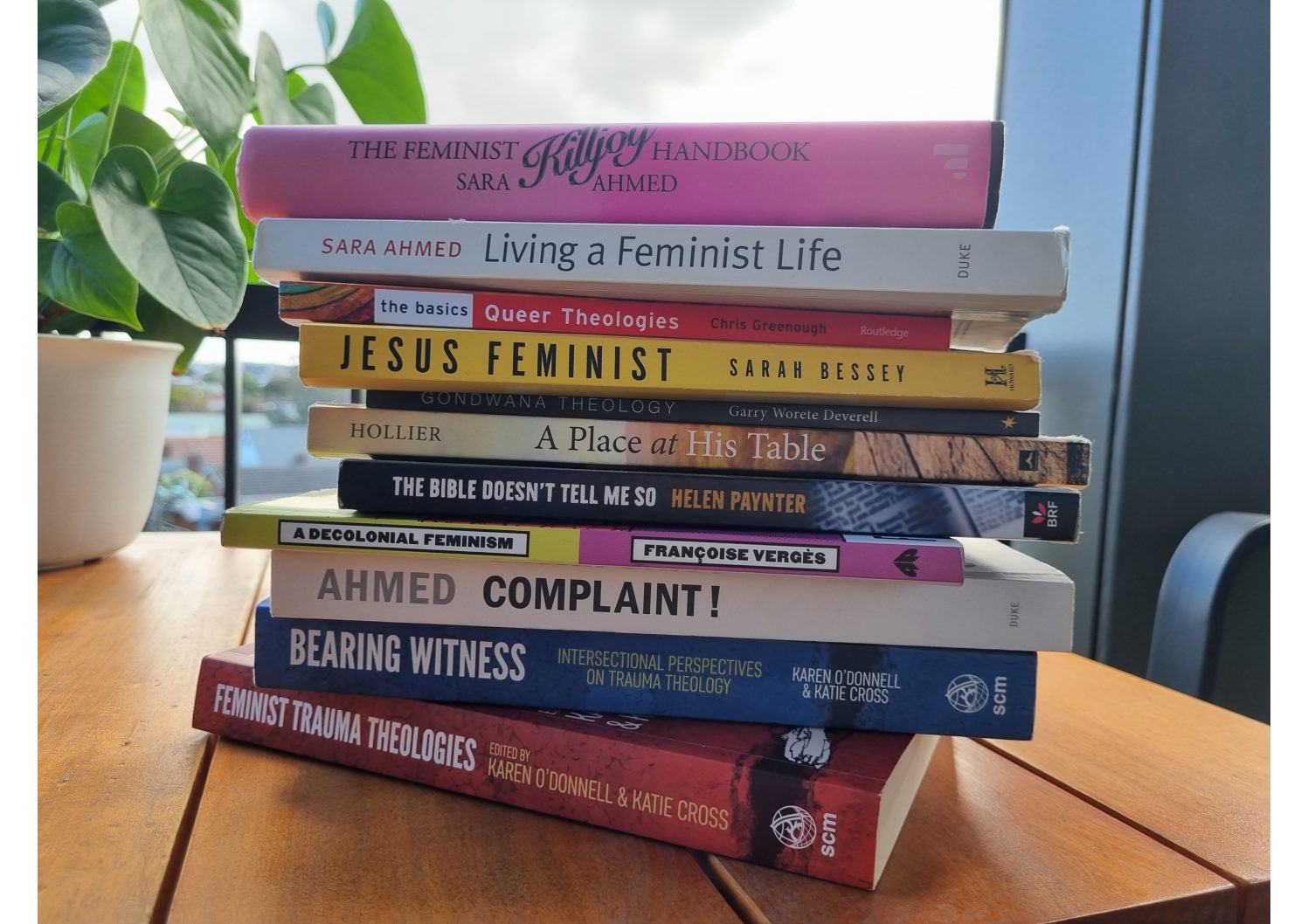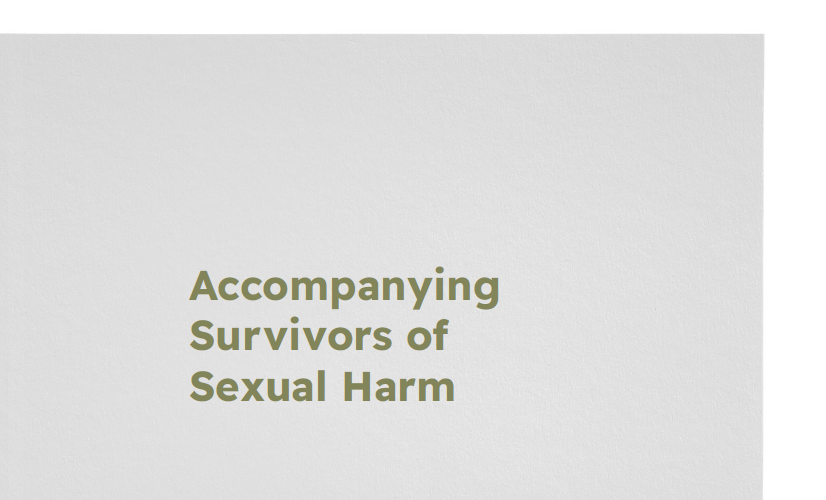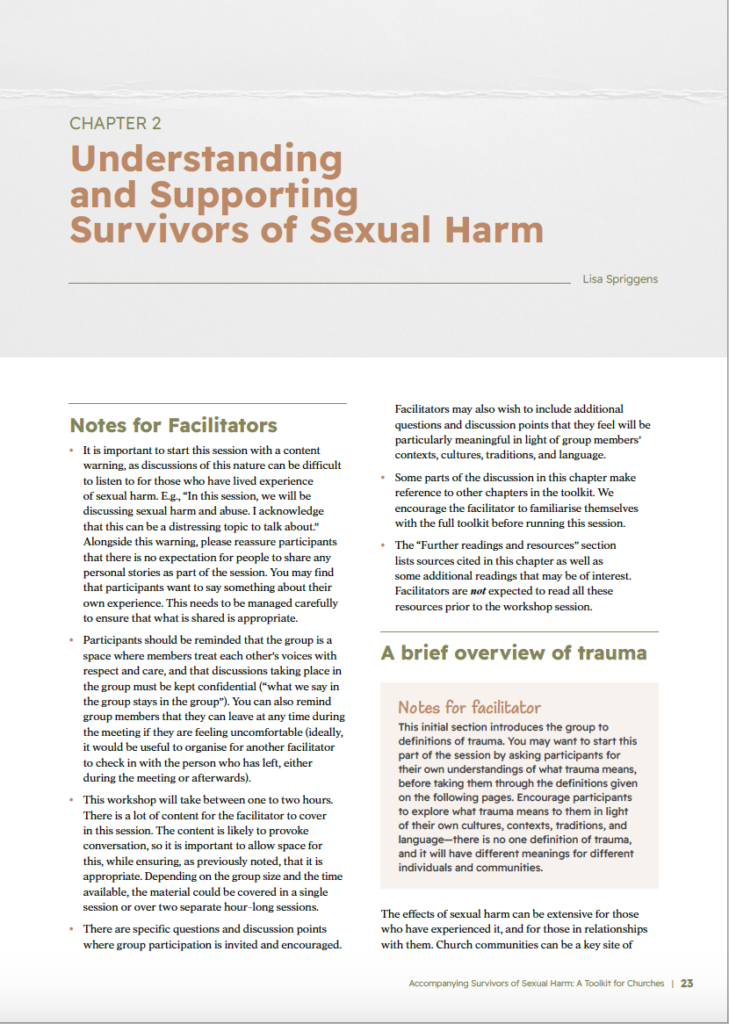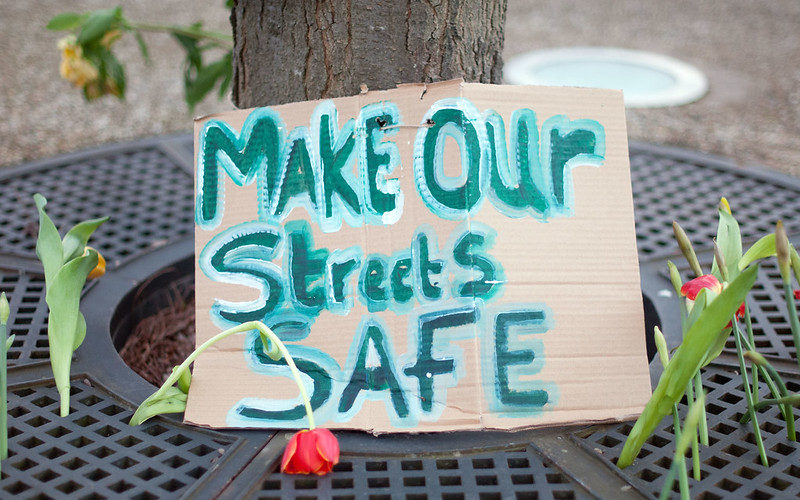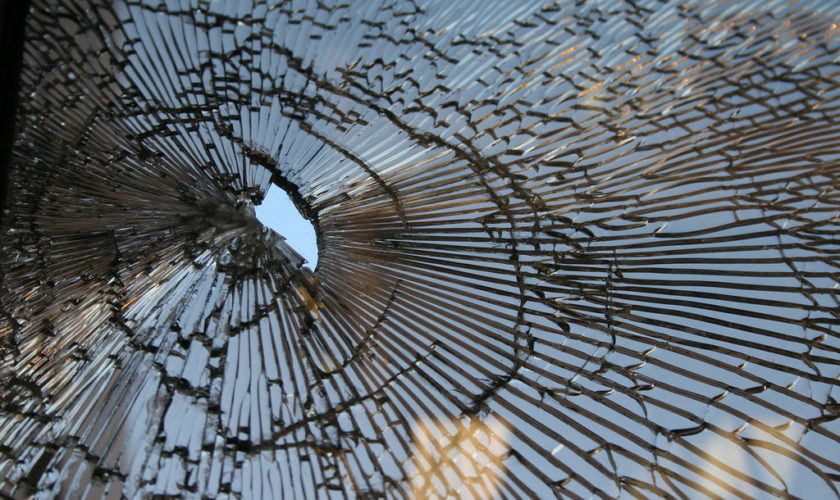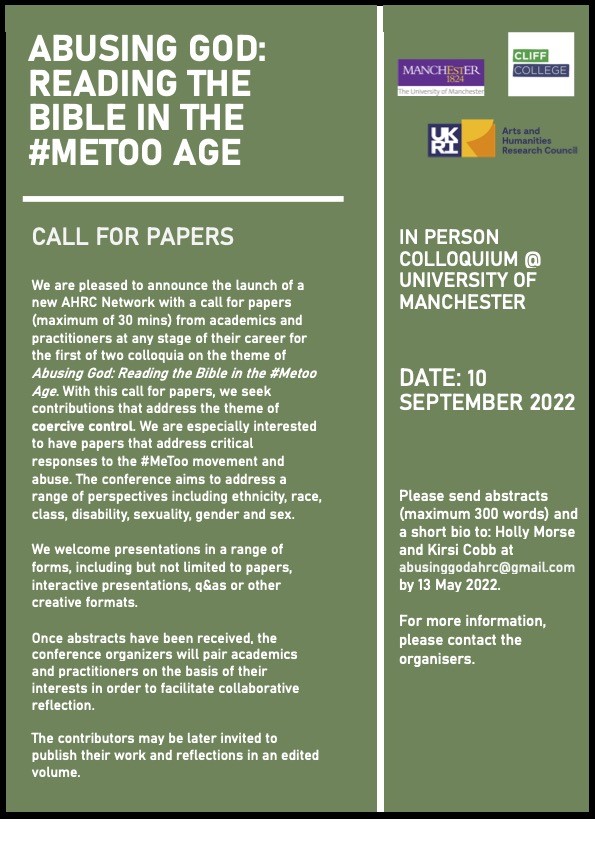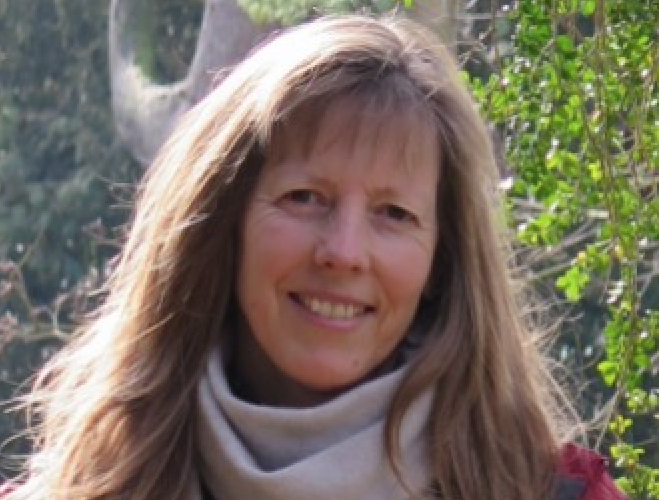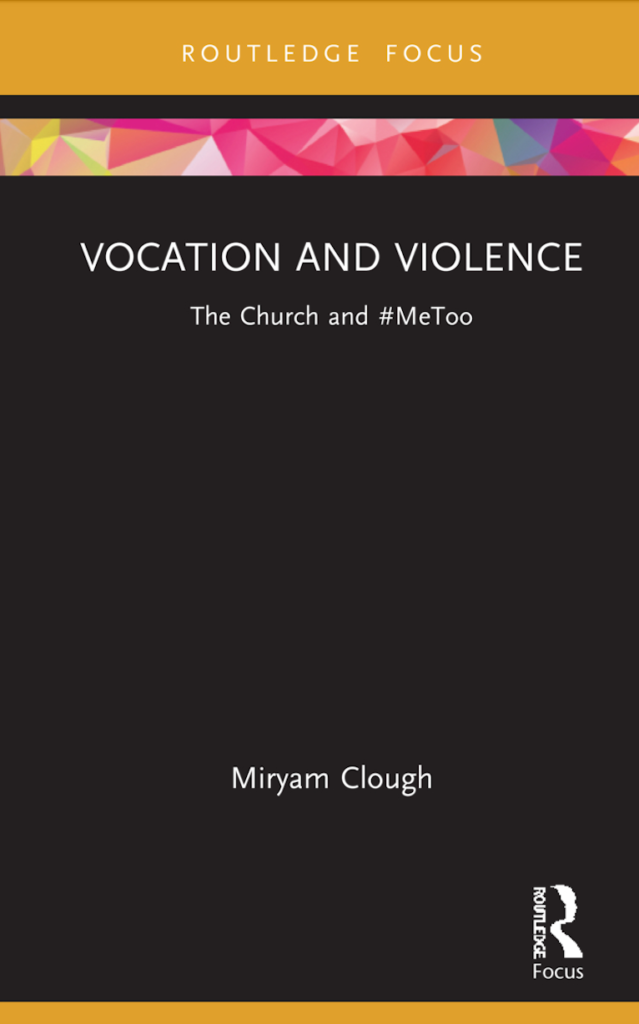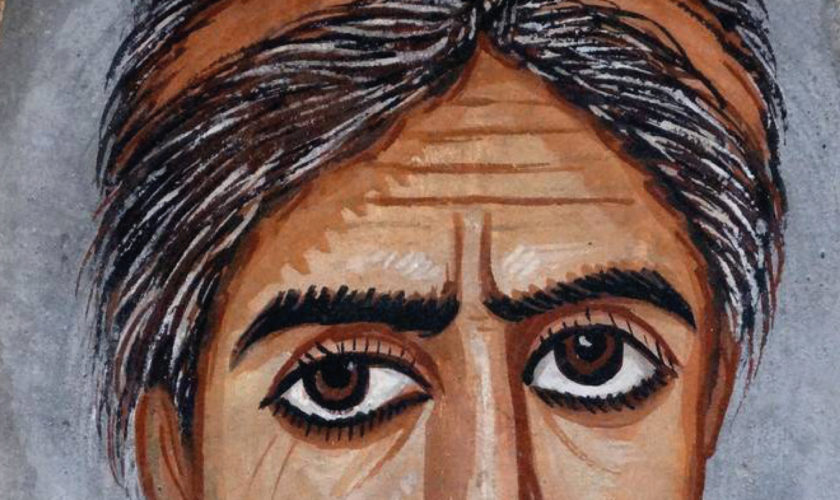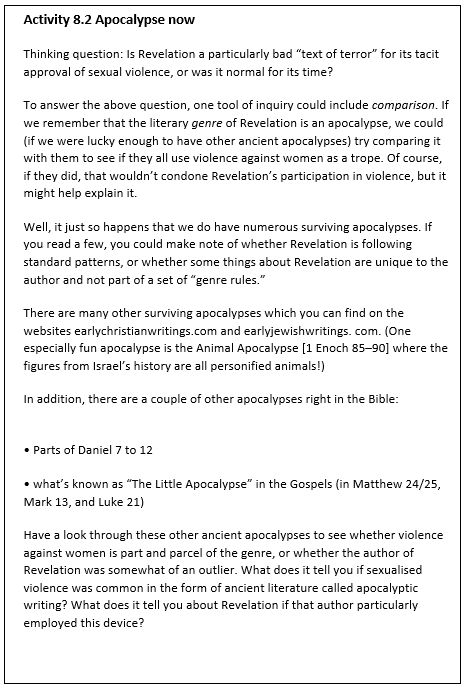Hilary Willett (she/her) fights for gender justice by writing icons and reclaiming the lives of biblical women. Her most recent icon writes the unnamed woman whose story is found in Judges 19. Here, Hilary reflects on the process of writing this icon.
“The Woman from Judges 19” is one of the more confronting icons I have written. I knew I wanted to write it within a few months of learning iconography. I first read about this woman in Phyllis Trible’s book Texts of Terror.[1] Judges 19 tells the story of a woman in scripture who should be known and mourned everywhere, but is rarely discussed.

The woman in Judges 19 has no name. In many translations, she is rather crudely described as a “concubine” to a Levite man. In even less forgiving translations, she is described as an “unfaithful” concubine (ESV, NIV). But it is hard to know the precise nature of her relationship with the Levite. At times, the Levite is described as her “husband.” Some scholars speak of her as a “secondary wife.” For myself, I do not really want to describe her according to her relationship with a man. It is enough to know that this woman existed and that the biblical authors give her no name.
This unnamed woman appears to be in a fraught relationship with the Levite. While the woman from Judges 19 is not given much agency by the textual authors, she does leave the Levite man at the beginning of the narrative. She travels back home and is away for four months. This hint of autonomy, however, is short-lived. The Levite sets out with a servant, follows her to her home and is welcomed (“with joy!”) by the woman’s father. The father and the Levite enjoy food and drink for five days. The father does not uphold his daughter’s choice to live separately from the Levite in this moment, he focuses on male comfort and social expectations around hospitality.
On the afternoon of the fifth day, the woman’s father encourages the Levite to stay for another night. The Levite wants to leave (a deeply unwise decision). He takes the woman with him; there is no objection to her leaving with him in the text. As they travel, the Levite refuses to stop for the night at many of the safe havens they pass, preferring to keep travelling until they reach a Benjamanite town. Unable to travel any further, the Levite and the woman are stranded. The Levite is unable to find a place to keep them safe for the night.
Eventually, an older man takes pity on the Levite and shelters him, the woman, and the Levite’s servant. However, the house is surrounded by men who wish to rape the Levite man. To protect the Levite, the woman is cast out of the house. She is raped to death. She dies with her hands on the doorstep of the house.
But this story, as horrific as it is, gets worse.
The Levite cuts up the woman’s body and sends the pieces throughout Israel to incite war. Israel goes to war against the tribe of Benjamin, virtually wiping them out. Towns, people, and animals are destroyed, until only 600 men are left alive. Then, fearing a future where the tribe of Benjamin is eradicated, these armies kill the inhabitants of another town (Jabesh-Gilead), sparing only 400 virgin women. These women are given to the 600 Benjaminites to continue the bloodline of the tribe. The men left without wives are instructed to abduct still more women from Shiloh.
There is a reason we don’t often talk about this story. It is depraved. It is a story of extreme male violence and terror, of war justified by patriarchal sin. At the heart of this violence is a woman, whose name is absent, whose voice is silenced, and whose body is not her own. She is used, over and over, by men who care more about protecting their masculinity, upholding social expectations, and enacting vengeance. Her vulnerability is extreme – just like every innocent person who died in the fallout of war, just like every one of those 400 women from Jabesh-Gilead, just like every woman abducted from Shiloh.
To show such vulnerability in this icon, the woman is written naked. To show her stark reality, the shadows are deep; there is no colour apart from the red lines on her skin. These lines indicate where her body will be divided up. In the middle of some of the sections, a tribe of Israel is written on her body. This visual allusion drew upon butchers’ charts for inspiration, which divide up animals according to their meat cuts. Her face is hidden to highlight the absence of her name or any identifying feature. Finally, to show the utter horror of her situation, her halo is fractured, its pieces raining down on her body.
There is a reason why we should tell this woman’s story. It is because the story has not ended. There is so much war and violence occurring in the world today, so much justifying the unjustifiable. Every time we allow violence to reign in the home, in church, in society, and in politics, it is horrifying. Every time a vulnerable body is used, every time women are abused, every time innocent people become fallout or justifications for war, we need to remember this story and say very clearly: “No. No more. Never again. This ends here.”
Find more of Hilary’s icons – including the Woman from Judges 19 – at Lumen Icons: https://www.lumenicons.nz/
[1] Phyllis Trible, Texts of Terror: Literary-Feminist Readings of Biblical Narratives (Philadelphia: Fortress, 1984).



